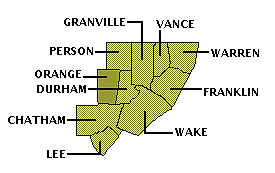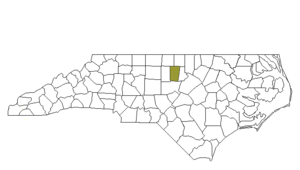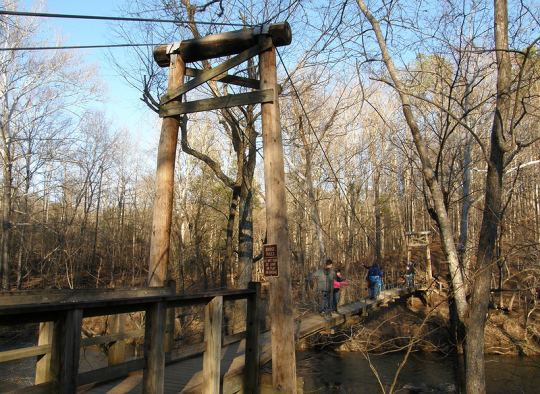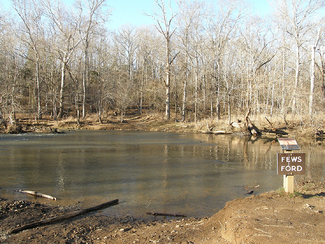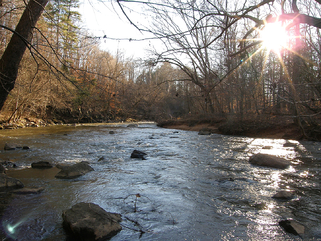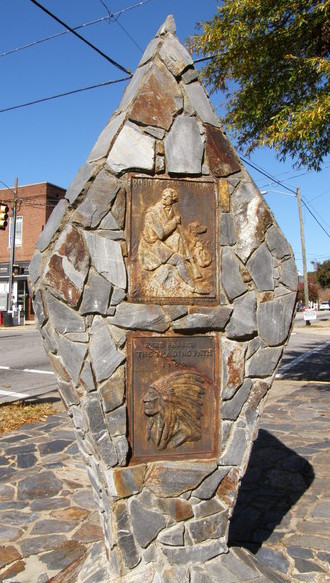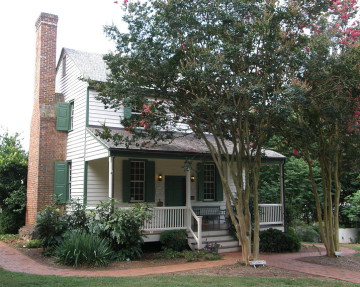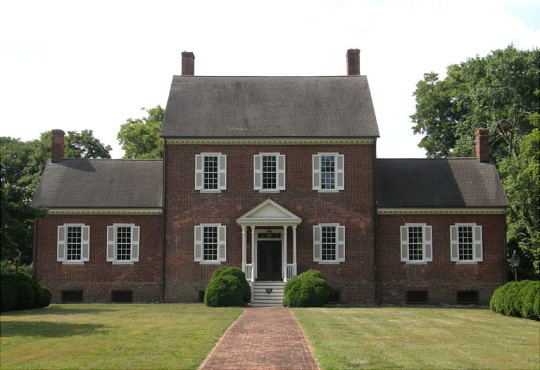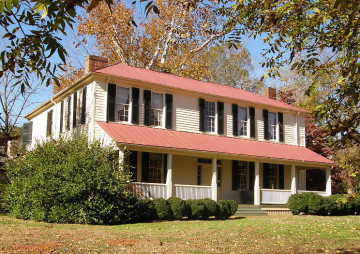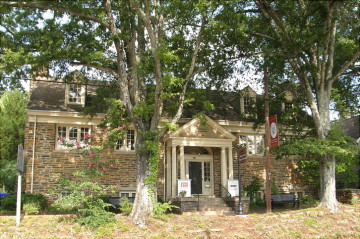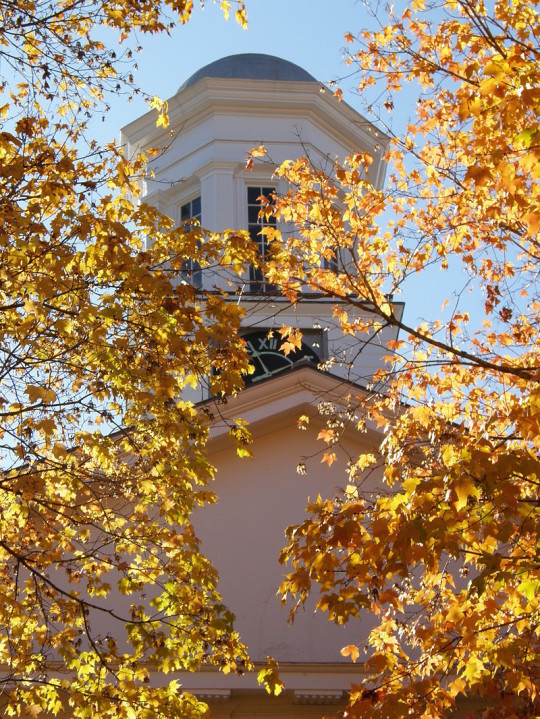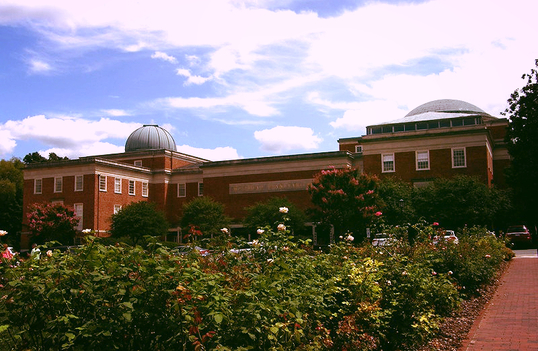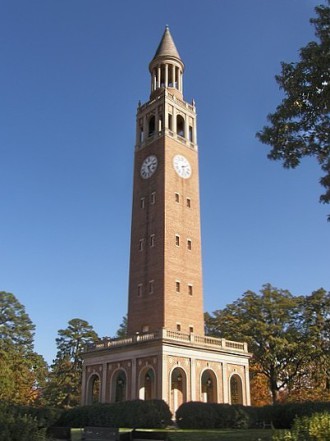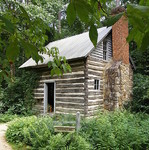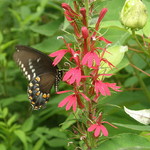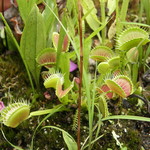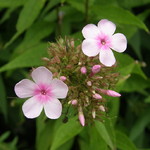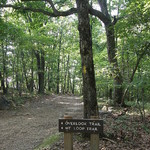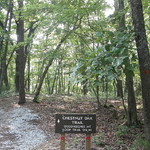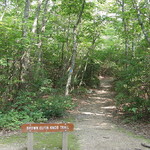ORANGE COUNTY
Scroll down this page or click on specific site name to view features on the following Orange County attractions/points of interest:
Eno River State Park, Historic Hillsborough, Morehead Planetarium and Science Center, North Carolina Collection Gallery, North Carolina Botanical Garden, Occoneechee Mountain State Natural Area
Fast facts about Orange County:
Created in 1752, the county is named for William V, Prince of Orange, grandson of George III.
The county seat is Hillsborough, named for Wills Hill, earl of Hillsborough. Other communities include Caldwell, Carrboro, Chapel Hill, Efland, and part of Mebane.
Orange County’s land area is 399.84 square miles; the population in the 2010 census was 133,801.
It is worth noting that many key events during the War of the Regulators (1764-71) took place in and around Hillsborough. The University of North Carolina, the first state university in the country, is located in Chapel Hill.
Between Hillsborough and Durham
The Eno River is a relatively short waterway in central North Carolina, covering a little more than 30 miles as it winds its way southeast through Orange and Durham counties before joining with the Little and Flat Rivers to form the Neuse. Good things sometimes come in small packages, however, and in 1975, the NC Division of Parks and Recreation acquired more than 1,000 acres to establish the Eno River State Park along the banks of the river. Five separate access points provide entry to this rugged environment, which provides opportunities for hiking, fishing, canoeing, camping, and picnicking. Class I, II, and III rapids can be found within the park boundaries. The most rewarding times for canoeing come after a rain, when the water level rises from one to three feet. Portaging is necessary in many places when the water level drops below one foot, while canoeing can become dangerous when the river rises above three feet. Information about current river conditions and access locations can be gotten at the park office near the Few’s Ford entrance.
If the idea of “roughing it” gets your juices flowing, primitive camping is available. Several family campsites are located about a mile from the camper parking lot at Few’s Ford. Camping permits are required and are available for a modest fee at the park office on a first-come, first-serve basis. A pit toilet services five campsites. Open fires are not permitted, and all supplies, including water, must be carried to the sites. Group camping for up to 26 people is also available. Picnic facilities are located at Few’s Ford and Cole Mill Access areas. Tables at the latter are tucked away in an especially nice wooded setting. Fishing is an activity naturally associated with a river, and among the common catches along the Eno are largemouth bass, bluegill, chain pickerel, and crappie. Anglers also reel in Roanoke bass, known as red-eye, a species of fish found only in the Eno-Neuse, Tar, Chowan, and Roanoke Rivers.
For those who just want to spend a little bit of quiet time away from the hustle of 21st century civilization, a variety of hiking trails – some easy, some hard, most moderate – give park visitors many options. Trails traverse tree roots and large stones, making footing rough and uneven in many places, and trails are sometimes slippery, especially near the river. The Buckquarter Creek Trail covers 1-½ miles along the banks of the Eno and offers a view of the best rapids on the river. The Cox Mountain Trail covers nearly 4 miles and treats hikers to a bouncy trip over a suspension foot bridge. Signage on the bridge indicates how high the floodwater rose after Hurricane Fran in 1999. Several trails provide glimpses into North Carolina’s past. Holden Mill, Shakori, and Cabelands Trails, for example, each lead around the remnants of old mills, while the Eno Quarry Trail, as the name might suggest, runs past the site of the old rock quarry where, from 1960 to 1964, stone was removed for the construction of Interstate 85. After the quarry ceased operations, ground water gradually filled the site, creating a 4-acre pond next to the river. Caution is urged around the quarry, as there are steep drop offs and no shallow areas, with depths running from 25 to 60 feet. Take Exit 170 (US 70 West) off I-85. Turn right onto Pleasant Green Road, then left onto Cole Mill Road, which ends at the Few’s Ford Access entrance. Hours at Few’s Ford Access are 8-6 November-February, 8-7 March and October, 8-8 April and September, and 8-9 May-August. Hours are slightly shorter at other access points. Closed Christmas Day. Free admission. 919-383-1686
Hillsborough
Founded in 1754, Hillsborough was and remains the seat of government for Orange County. Located in was was then the expansive North Carolina "back-country," Hillsborough was a beehive of activity during North Carolina's late colonial and Revolutionary War periods. The town experienced much unrest during the period of the Regulator Movement, which lasted from 1767-1771. Following the de-cisive Battle of Alamance in May, 1771, six Regulators were tried, convicted, and executed in Hillsborough. Four years later, in 1775, the town hosted North Carolina’s 3rd Provincial Con-gress. In 1781, as the War of Independence stormed through the south, Tories led by Colonel David Fanning captured state governor Thomas Burke in Hills-borough. In 1788, the town served as host to North Carolina’s first Constitutional Convention. Although this convention voted not to ratify the Constitution, the debate continued, positions changed, and another convention held the following year in Fayetteville resulted in ratification, thus making North Carolina the 12thstate to join the fledgling Union.
The obvious place to begin a tour of Hillsborough is at the visitor center, located in the circa 1850s Alexander Dickson House. This two-story white-frame farm-house serves as Orange County’s visitor center, but it has historic importance in its own right. The house has been called “the last headquarters of the Con-federacy” since it was used by General Joseph E. Johnston in April, 1865 as his headquarters while he negotiated terms of surrender with William T. Sherman. The visitor center is located at 150 East King Street and has all the information needed on the town's historic attractions. Hours are 10-4 Monday-Saturday and 1-4 Sunday. 919-732-7741
Ayr Mount is a striking Federal-style plantation home built by merchant William Kirkland in 1815. The two-story brick home was home to four generations of Kirklands. The house showcases many artifacts, including original maps drawn by Peter Jefferson, Thomas Jefferson’s father. Visitors to the estate should allow themselves time to enjoy Poet’s Walk, a self-guided nature trail about one mile in length which encircles Ayr Mount and meanders past the Eno River, the old Indian Trading Path, and the foundations of a roadside tavern.
Another historic site is the Burwell School, which operated as a school for young ladies from 1837-1857. Originally a “two over two” frame farmhouse, it more than doubled in size in 1848, at which time a central hallway and north wing were added. During its years of operation, over 140 women were schooled in composition, history, geography, mathematics, and philosophy, as well as such “ornamental” subjects as music, drawing, painting, and needlework. Tours of the school give much attention to the integral roles played by the Burwells’ eleven slaves to the operation of the school.
The Orange County His-torical Museum is located in the 1934 Confederate Memorial building and exhibits an eclectic mix of artifacts, including Civil War memorabilia. Lots of infor-mation and artifacts are on hand relating to Hills-borough’s colonial and Revolutionary War period. In the old cemetery located near the Museum are the graves of three notable statesmen: state senator Archibald Murphey, a champion of public education in North Carolina; William Graham, NC Governor (1845-49) and US Secretary of the Navy; and William Hooper, one of North Carolina's three signers of the Declaration of Independence.
Chapel Hill
Morehead Planetarium and Science Center stands at the very heart of the University of North Carolina at Chapel Hill campus. In 1949, Morehead Planetarium was the first such facility to open on a university campus. Since then, the planetarium and science center have been educating students and general public alike with a variety of daily programs. Some of the films currently being shown at the 229-seat GlaxoSmithKline Fulldome Theater are aimed at the younger set, as titles like “Magic Tree House” and “One World, One Sky: Big Bird’s Adventures” would suggest. Many others are for older audiences, such as “Dynamic Earth,” “Wildest Weather,” and “Astronaut.” The latter is an especially appropriate film, since the likes of Alan Shepard, Neil Armstrong, and Buzz Aldrin and their fellow astronauts from the Mercury, Gemini, Apollo, Skylab, and Apollo-Soyuz programs, as well as early space shuttle missions, came to Morehead Planetarium for training in celestial navigation. Hours are 10-3:30 Tuesday through Saturday and 1-4:30 Sunday. Admission charged. 919-962-1236
The UNC-Chapel Hill Visitor Cen-ter, located in the west wing of the Planetarium building, welcomes guests to the first public university in the United States and provides visitors with a map of the campus. The Planetarium is a short walk from many of the University’s iconic landmarks: Old East, the oldest building on campus, with the cornerstone laid in 1793; the Davie Poplar, which, according to legend, was the tree under which William R. Davie, the “Father of the University,” rested while selecting sites for the first buildings; the Old Well, the official symbol of the University; “Silent Sam, ”a Civil War mem-orial erected in 1913 to honor the 321 UNC alumni who died while serving the Confederacy; Wilson Library, which houses the North Carolina Collection Gallery, the Southern Historical Collection, and the Rare Book Room; and the Bell Tower, a 14-bell carillon built in 1931.
The North Carolina Collection Gallery in Wilson Library features exhibits highlighting notable individuals and events in Tar Heel history, such as Sir Walter Raleigh, the gold industry, the American Revolution and American Civil War, and more. 919-962-1172
Chapel Hill
The main portion of the North Carolina Botanical Garden at UNC-Chapel Hill includes the Education Center, which opened in October of 2009, the Piedmont Nature Trails, two miles of trails through 80-acres of pine and hardwood forests, and the Display Gardens. The Gardens focus upon specific habitats – Coastal Plain, Piedmont, and Mountain – or varieties, such as native perennials, carnivorous plants, and flowering plants. The Herb Garden displays varieties used for medicinal, culinary, or industrial purposes. UNC alumnus and North Carolina author Paul Green, author of the outdoor drama The Lost Colony, did much of his writing in the single room log cabin which was moved to the Garden in 1991. Hours are 8-5 Monday through Friday, 9-5 Saturday, and 1-5 Sunday. The Piedmont Nature Trails are open daily dawn to dusk. Admission is free. 919-962-0522 In addition to the Display Gardens and Education Center off Fordham Blvd, the North Carolina Botanical Garden also includes the Coker Arboretum, Battle Park, Coker Pinetum, and Forest Theatre on the UNC campus, and the Mason Farm Biological Reserve.
Hillsborough
Covering 190 acres between the town of Hillsborough and busy Interstate 85 is the Occoneechee Mountain State Natural Area. Although preserving a natural setting, the sounds of the highway often impose upon the tranquility. Limited activities at the park include fishing – from two small ponds or from the banks of the Eno River – and hiking. Various easy trails lead around and through old forests that provide an important habitat for wildlife. The Chestnut Oak Ridge Trail leads to the mountain’s summit; at 867 feet, it is the highest point in Orange County. A short spur off this trail leads to the bluffs and an overlook of the Eno River below. The park is known for its population of brown elfin butterflies, a species not found anywhere else in the region. Park hours vary seasonally. Admission is free.
Orange County is bordered by ALAMANCE (Region Six), CHATHAM, DURHAM, and PERSON counties.
Return to REGION FOUR HOME PAGE.
Return to GEOGRAPHIC REGIONS HOME PAGE.

